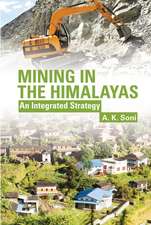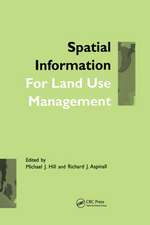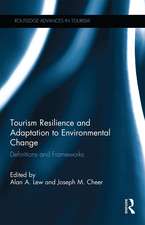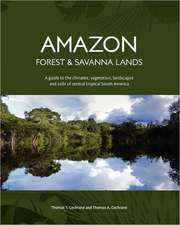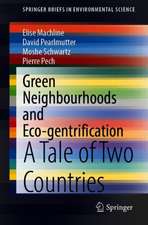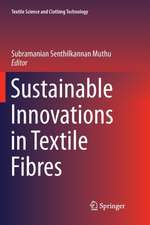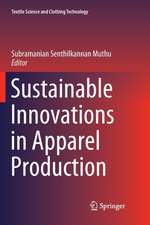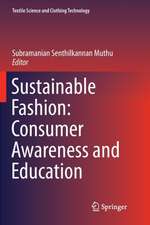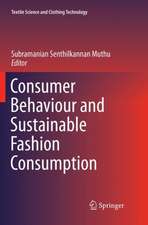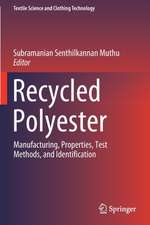Assessment of Carbon Footprint in Different Industrial Sectors, Volume 2: EcoProduction
Editat de Subramanian Senthilkannan Muthuen Limba Engleză Hardback – 30 apr 2014
| Toate formatele și edițiile | Preț | Express |
|---|---|---|
| Paperback (1) | 641.03 lei 6-8 săpt. | |
| Springer Nature Singapore – 3 sep 2016 | 641.03 lei 6-8 săpt. | |
| Hardback (1) | 646.11 lei 6-8 săpt. | |
| Springer Nature Singapore – 30 apr 2014 | 646.11 lei 6-8 săpt. |
Din seria EcoProduction
- 18%
 Preț: 999.60 lei
Preț: 999.60 lei - 15%
 Preț: 637.59 lei
Preț: 637.59 lei - 15%
 Preț: 644.18 lei
Preț: 644.18 lei - 24%
 Preț: 1137.30 lei
Preț: 1137.30 lei - 18%
 Preț: 783.81 lei
Preț: 783.81 lei - 18%
 Preț: 963.47 lei
Preț: 963.47 lei - 19%
 Preț: 554.19 lei
Preț: 554.19 lei - 15%
 Preț: 637.59 lei
Preț: 637.59 lei - 18%
 Preț: 964.71 lei
Preț: 964.71 lei - 15%
 Preț: 645.28 lei
Preț: 645.28 lei - 15%
 Preț: 643.48 lei
Preț: 643.48 lei - 18%
 Preț: 946.55 lei
Preț: 946.55 lei - 20%
 Preț: 644.48 lei
Preț: 644.48 lei - 15%
 Preț: 644.18 lei
Preț: 644.18 lei - 15%
 Preț: 590.30 lei
Preț: 590.30 lei - 18%
 Preț: 722.75 lei
Preț: 722.75 lei - 18%
 Preț: 944.36 lei
Preț: 944.36 lei - 15%
 Preț: 641.53 lei
Preț: 641.53 lei - 15%
 Preț: 646.30 lei
Preț: 646.30 lei - 18%
 Preț: 945.79 lei
Preț: 945.79 lei - 15%
 Preț: 640.71 lei
Preț: 640.71 lei - 18%
 Preț: 1006.87 lei
Preț: 1006.87 lei - 18%
 Preț: 785.86 lei
Preț: 785.86 lei - 18%
 Preț: 999.60 lei
Preț: 999.60 lei - 15%
 Preț: 644.95 lei
Preț: 644.95 lei - 18%
 Preț: 788.41 lei
Preț: 788.41 lei - 15%
 Preț: 646.94 lei
Preț: 646.94 lei - 24%
 Preț: 783.26 lei
Preț: 783.26 lei -
 Preț: 389.11 lei
Preț: 389.11 lei
Preț: 646.11 lei
Preț vechi: 760.13 lei
-15% Nou
Puncte Express: 969
Preț estimativ în valută:
123.65€ • 128.61$ • 102.08£
123.65€ • 128.61$ • 102.08£
Carte tipărită la comandă
Livrare economică 14-28 aprilie
Preluare comenzi: 021 569.72.76
Specificații
ISBN-13: 9789814585743
ISBN-10: 9814585742
Pagini: 308
Ilustrații: X, 298 p. 80 illus., 50 illus. in color.
Dimensiuni: 155 x 235 x 22 mm
Greutate: 0.58 kg
Ediția:2014
Editura: Springer Nature Singapore
Colecția Springer
Seria EcoProduction
Locul publicării:Singapore, Singapore
ISBN-10: 9814585742
Pagini: 308
Ilustrații: X, 298 p. 80 illus., 50 illus. in color.
Dimensiuni: 155 x 235 x 22 mm
Greutate: 0.58 kg
Ediția:2014
Editura: Springer Nature Singapore
Colecția Springer
Seria EcoProduction
Locul publicării:Singapore, Singapore
Public țintă
Professional/practitionerCuprins
A Review on Energy use and Greenhouse Gas Emissions Derived of Worldwide Hake Fishing.- A Life Cycle Assessment Application: The Carbon Footprint of Beef in Flanders (Belgium).- Carbon Footprint and Energy Estimation of Sugar Industry: An Indian Case Study.- Carbon Footprint as a Single Indicator in Energy Systems: The Case of Biofuels and CO2 Capture Technologies.- Reduction in Carbon Footprint of Coal Fired Thermal Power Plants by Promoting CFL and LED Lights in Households, Offices and Commercial Centres.- Assessment of Carbon Footprinting in the Wood Industry.- Carbon Footprint of Recycled Products: A Case Study of Recycled Wood Waste in Singapore.- Sector-wise Assessment of Carbon Footprint Across Major Cities in India.- The use of Carbon Footprint in the Wine Sector: Methodological Assumptions.
Notă biografică
Dr Subramanian Senthilkannan Muthu is working for SGS Hong Kong for its Global Sustainability Services as Eco-design Consultant after his Doctoral research study from The Hong Kong Polytechnic University, Hong Kong. He has authored more than 75 journal publications and numerous conference publications, 8 books and 2 book chapters. He serves various peer-reviewed journals in environmental and textile sciences as an editor/editorial board member and also as a reviewer.
Textul de pe ultima copertă
Followed by the previous part (Volume-1), Volume-2 of carbon footprint assessment book deals with the assessment of carbon footprint in different other sectors, which were not dealt in the first part. Attention on Carbon footprint is growing day-by-day from the public, government and media. Certainly it is one of the most important topics in the agenda of every nation, which is trying its best to reduce its carbon footprint to the maximum possible extent. Every manufacturing industry or sector would like to reduce the carbon footprint of its products and consumers are looking for the products which emit lower carbon emissions in their entire life cycle. Assessment of Carbon footprint for different products, processes and services and also carbon labeling of products have become familiar topics in the recent past in various industrial sectors. Every industry has its unique assessment and modeling techniques, allocation procedures, mitigation methods and labeling strategies for its carbon emissions. With this background, volume two of this book has been framed with dedicated chapters on carbon footprint assessment on various industrial sectors, apart from the ones covered in Volume 1. In each chapter, details pertaining to the assessment methodologies of carbon footprint followed in a particular industry, challenges in calculating the carbon footprint, case studies of various products in that particular industry, mitigation measures to be followed to trim down the carbon footprint, recommendations for further research are discussed in detail.
Caracteristici
First dedicated book pertaining to carbon labeling and the assessment of Carbon Footprint (CF) in various industrial sectors Highlights carbon footprint assessment techniques in different industries with detailed case studies Emphasizes the mitigation measures to reduce the carbon footprint in different industrial sectors Includes supplementary material: sn.pub/extras

